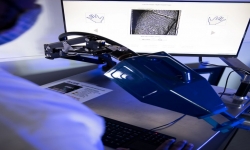Novel CSIR optical system captures surface and subdermal fingerprint
The CSIR developed a contactless fingerprint system that captures internal and surface fingerprints simultaneously.
The system uses optical coherence tomography, a non-invasive imaging system that uses light waves to capture micrometre-resolution images. Acquiring internal and surface fingerprints simultaneously captures the fingerprint in 3D format and represents it in two-dimensional and can, therefore, be used in databases, together with prints acquired from conventional scanners.
This is particularly valuable if the surface fingerprint is of low quality, for instance, in the case of mummified corpses or worn skin due to manual labour, then the internal fingerprint can be used instead.
The technology is of particular benefit to the South African Police Services’ forensic mortuaries to conduct queries against the local criminal record centre database for identification of unidentified victims or perpetrators of crime. It was successfully tested for this purpose at a mortuary in Gauteng in 2020 as a means of acquiring fingerprints of corpses. Mortuary personnel were also trained to use the technology.
Aside from succeeding in capturing the print from a lifeless finger, which not all biometric systems can achieve, the technology can detect fake prints to prevent false identification attempts or ‘spoofing’.
The system was calibrated using the optical coherence tomography computer at the CSIR’s Photonics Prototyping Facility.



